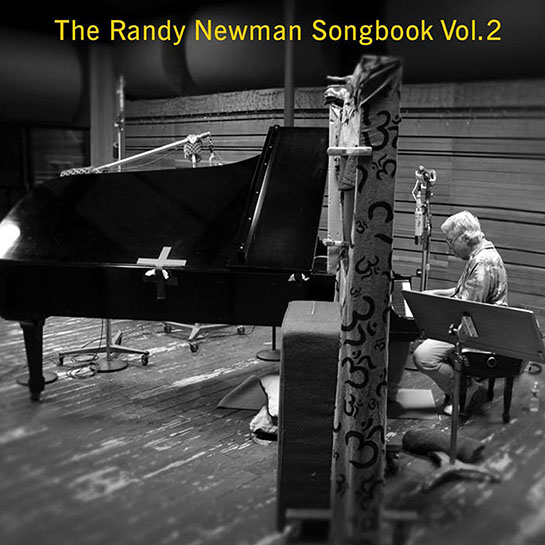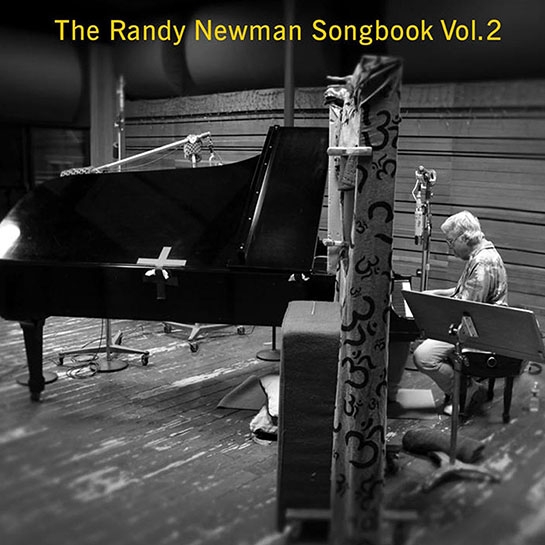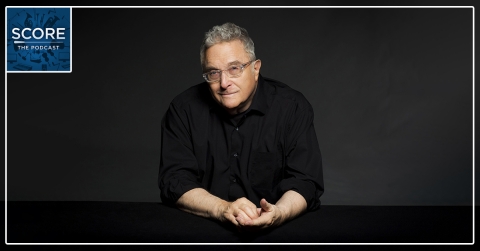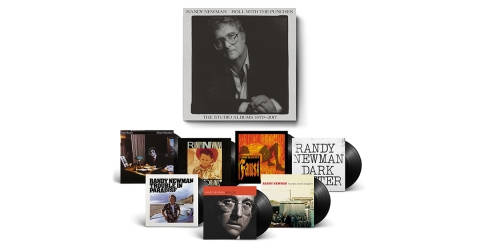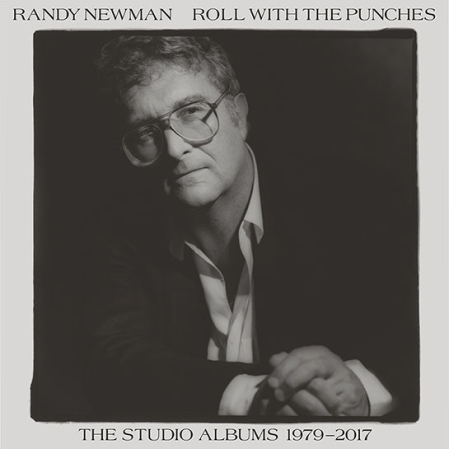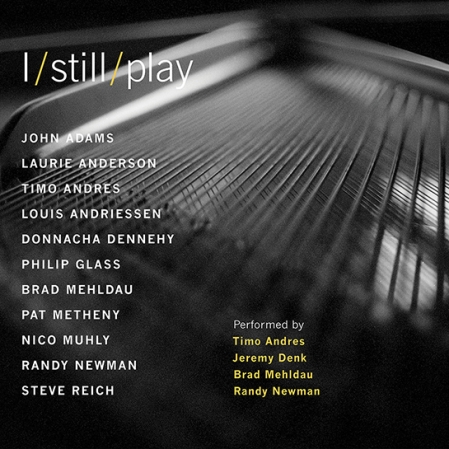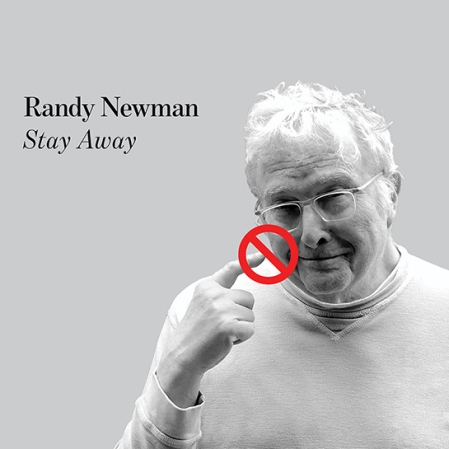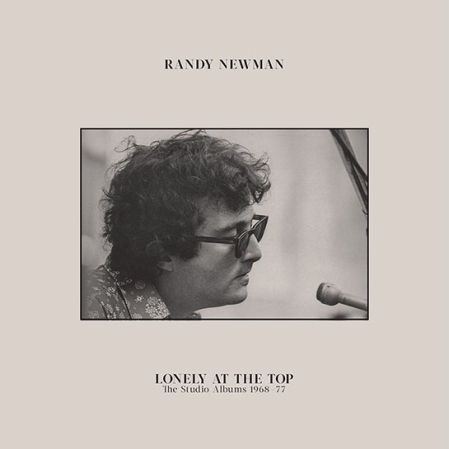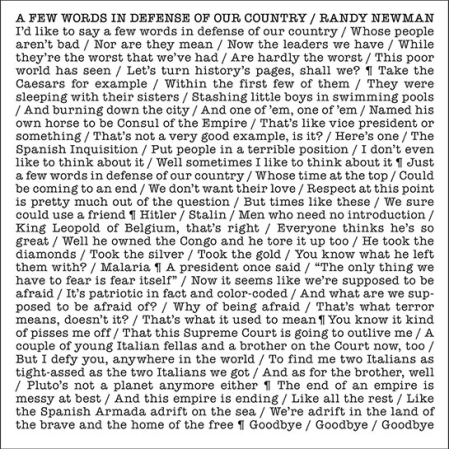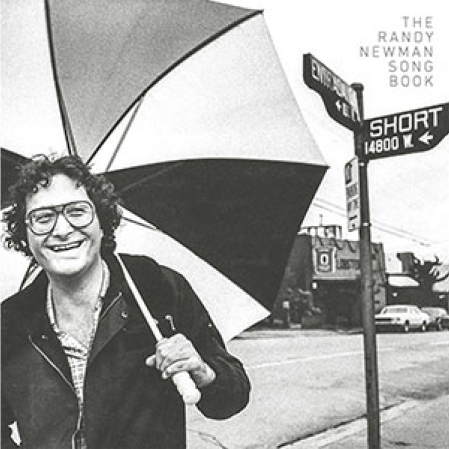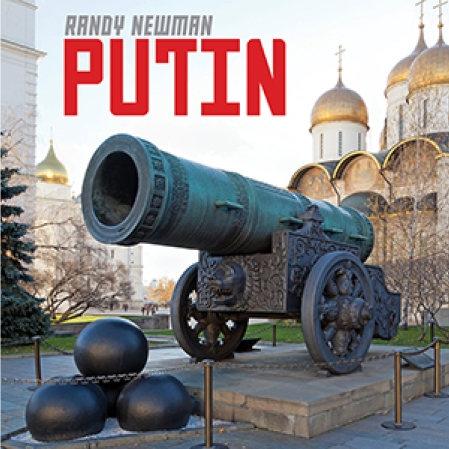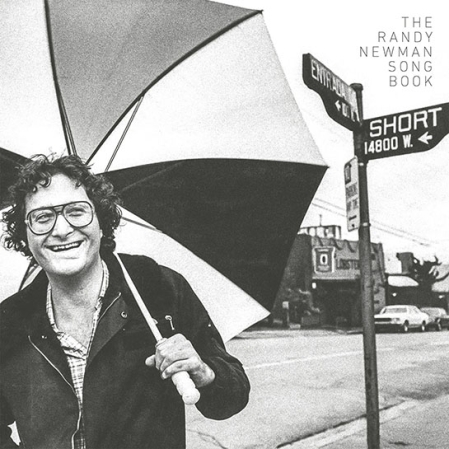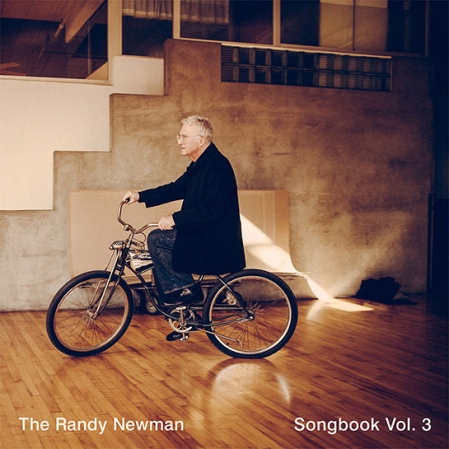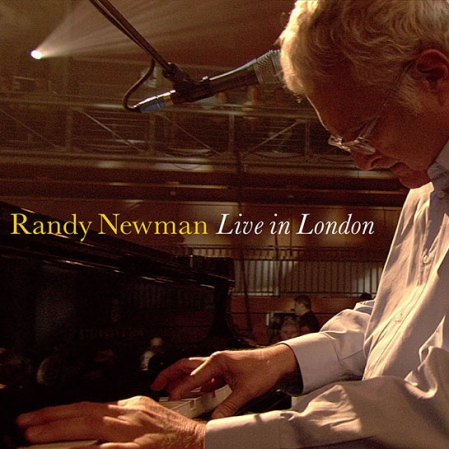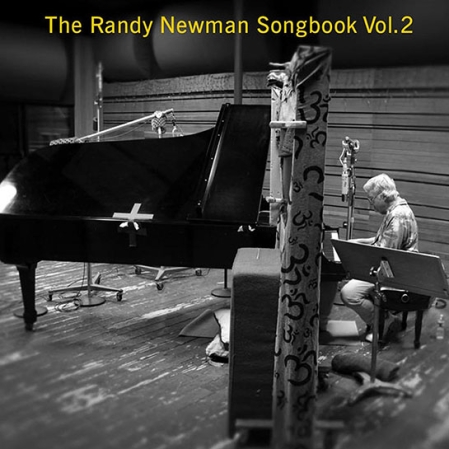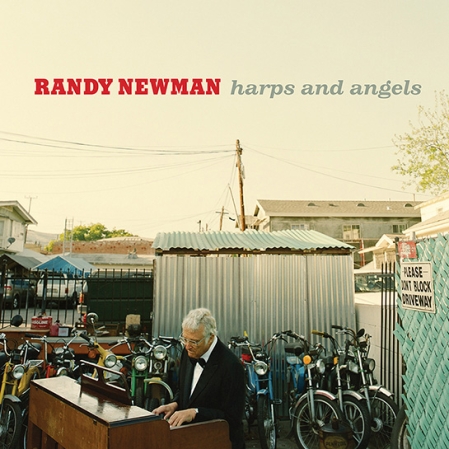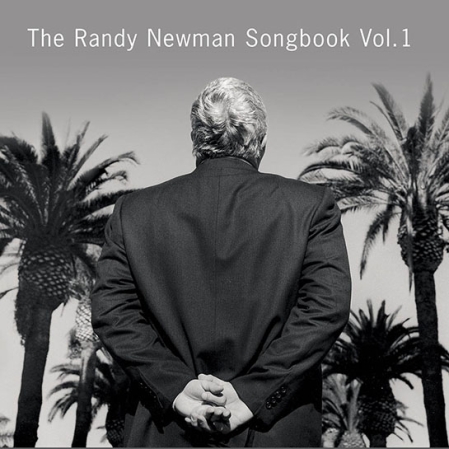Randy Newman takes a fresh look at both classic and more recent work in new solo takes on 16 of his celebrated songs, surveying 40 years of recordings. Songbook Vol. 2, includes songs spanning from the 1968 album Randy Newman through Newman’s most recent, 2008’s Harps and Angels. The Philadelphia Daily News gives the album an A. MusicOMH calls it "an invigorating celebration of the power of music, and a delicate declaration of the power of one man and his piano."
While pondering whether to record a second volume of the Randy Newman Songbook, the two-time Academy Award-winning songwriter—honored most recently for “We Belong Together” from Toy Story 3—claims he took a practical, Hollywood movie-studio view of the situation: “The first one did so well that nowadays you might as well just do the same thing again.”
Newman, who’s garnered multiple Grammy and Emmy Awards to go with his pair of Oscars, made his Nonesuch debut in 2003 with the Randy Newman Songbook Vol. 1, 18 tracks drawn from his then 35-year-long career as a recording artist and film score composer, all of them re-cut live in the studio, with just piano and voice, by producer Mitchell Froom. This engrossing, stripped-down format, mirroring Newman’s live sets, was indeed welcomed both by fans and critics. As the Christian Science Monitor put it at the time, “Nobody writes songs like Randy Newman. And nobody ever has … This retrospective makes it clear that no one in music can approach his sheer nerve, lyrical ambition, or musical gifts.”
With the 16 tracks that comprise Vol. 2, Newman now surveys 40 years of recordings, once again reaching back to his preternaturally mature self-titled 1968 debut for the haunting “Cowboy,” and to 1970’s acclaimed 12 Songs for the hapless stalker’s lament of “Suzanne,” the backhanded racial-stereotyping critique of “Yellow Man,” and the deadpan but hilarious beach-blanket tragedy of “Lucinda.” (“That actually happened,” Newman insists. “A girl got run over by a beach cleaning truck at the beach I used to go to.”) He also reinterprets the darkly amusing “Laugh and Be Happy” and the bittersweet “Losing You” from his most recent studio disc, 2008’s Harps and Angels, an album he believes “might be the best record I’ve ever made.” He’s not the only one taking a second look at “Losing You”; Mavis Staples and Neil Diamond each recently recorded covers of it. Once again, Newman collaborates with Froom—who’s been behind the board for Newman’s recordings since 1999’s Bad Love—and his childhood friend and lifelong champion Lenny Waronker, who co-produced Harps and Angels.
According to Newman, Nonesuch label head Bob Hurwitz had first dreamed up the project—a variation on the recorded Tin Pan Alley songbooks of the '50s and '60s, such as the series Ella Fitzgerald cut for Verve, compiling on individual LPs the most notable work of composers like Cole Porter, Harold Arlen, and Duke Ellington: “I think Bob takes me seriously as an important American songwriter so he wanted a songbook type thing for people to have when I’m … I don’t know … gone.”
The Randy Newman Songbook, Vol. 2 offers an opportunity—while Newman is still with us, of course—to savor more of the highlights and rediscover overlooked treasures from his extraordinary catalog, reaffirming in the process the musical and thematic durability of this repertoire. Unlike many of his more self-referential singer-songwriter contemporaries, Newman’s work only seemed to have gained in relevance and astuteness over the years. He’s been unafraid to assume the roles of some fairly despicable, or at least painfully self-deluded, characters to make a point, and these forthright new solo performances of his story-driven songs serve to heighten their humor, pathos, and prescience. As the Washington Post recently put it, “These songs revolutionized pop songwriting by replacing the sincere confessional with monologues sung from the view of someone other than the singer-songwriter.”
“It’s happenstance in a way,” say Newman, of his particular narrative style. “I didn’t exactly realize that what I was doing was so different. I wasn’t glorying in the difference in any way. It doesn’t sound like it, but I was sort of trying to be like everybody else. But I really couldn’t put up with the lyrics I was writing before 1965. I like comedy perhaps too much for somebody in this field. Writers now are using it more; they’re not always romantic heroes or rock heroes. As I’ve said a billion times, why can’t we have the same latitude that a short-story writer has? But the medium may not be designed for it. You could make a good argument that direct expression is the most effective. But that’s not for me.”
As for choosing what repertoire to readdress this time, Newman, his producers, and his manager each made set lists to compare and contrast. But, says Froom, “we were just following our instincts and not trying to be precious about it.” Before they formally entered the studio, Froom continues, “I went to Randy’s house with a boom-box every day for a couple of weeks and Randy would just play. It was a form of practice but it also became a guide to what songs we should be doing. A few of them just stepped forward. And it was a great way of really warming up Randy’s voice. By the time we got to the studio, his voice was really strong.”
In fact, from a vocal perspective, Newman seems to have grown into the various roles he cast himself in as a younger writer. For example, “Kingfish,” the story of Louisiana power broker Huey Long, is “more convincing now,” decides Froom. “Cowboy”, which could be the melancholy flipside to the award-winning odes Newman has written to Toy Story’s hero Woody, gains deeper poignancy coming from an older man’s voice. (That one, coincidentally, was inspired by another movie, the Kirk Douglas western, Lonely Are the Brave, one of the few of Newman’s pop songs that drew from a cinematic source.) “Suzanne,” which Newman rarely performs now, has taken on an even more compelling yet decidedly unsettling quality; as Newman admits, “It puts kind of a chill on a show and it’s hard to laugh, although the audience still does, at least a little bit.” Conversely, the outrageous “My Life Is Good,” in which a proudly obnoxious master of the universe is brought up short by a scolding school teacher, comes across that much funnier shorn of its earlier big arrangement; you can simply hear the jokes better.
“With that one in particular,” Newman decides, “I think we might have overcooked the arrangement when we originally recorded it. I think it might be better on piano. And I’m singing better now so I was glad to be able to do other songs like ‘Sandman’” (from his 1995 theatrical rendering of the Faust legend). “I couldn’t have done it before but I can now.”
The Randy Newman Songbook, Vol. 2, Froom notes, is as much master class as retrospective: “People should study this for his piano scores alone. Randy comes from a lineage of Gershwin, not Woody Guthrie. He’s unique in that way, with his depth of musical knowledge.”
It’s also a chronicle in song of the ongoing creative journey he’s taken with Waronker. The legendary former head of Warner Bros Records is responsible for cajoling Newman, whose uncles Alfred and Lionel Newman were already celebrated Hollywood film-score composers, to get into the songwriter’s trade in the early '60s. As Newman admits, “I don’t know where I would be without Lenny. I was studying music and he suggested that I start writing songs. So I did. He suggested I play them for publishers. So I did. We went to see Lou Adler. We went to New York to see Jerry Leiber and Mike Stoller. We were like Mickey Rooney and Judy Garland. Lenny was my backbone then. He was the courage that kept me going; I didn’t have it.”
Assessing this collection himself, Newman says, “I’m gratified that the songs held up.” Then he reconsiders. “Well, ‘Lucinda’ never held up. One time I played a show at the Bitter End in New York City and Bob Dylan was there. I had done a bunch of stuff, but afterwards, he said to me, “‘I’m thinking of moving out to California. That song about the beach cleaning—think I could write a song like that?’ I still don’t know if he was making fun of me or not. It’s three chords, as clumsy as possible, really, but it sort of runs along and Mitchell and Lenny liked it, maybe a little better than I did.
“But,” he concludes, “I’m glad that songs maybe 40 years apart sound like they’re written by the same guy and there’s not a perceptible decline in quality. It was putting the sequence together that was really difficult, particularly for Mitchell, who spent days listening to all this stuff. I don’t know if it matters much anymore, but it matters to us—the keys and the tempi—so that the whole thing would sound like an album. And it does.”
PRODUCTION
Co-produced by Mitchell Froom and Lenny Waronker
Recorded at Conway Studios, Los Angeles, CA
Engineer: David Boucher
Mixed at Tea Time Studios, Santa Monica, CA
Mastered by Robert C. Ludwig at Gateway Mastering Studios, Portland, ME
Design by Barbara de Wilde
Cover Photograph by Robb Bradley
Executive Producers: Robert Hurwitz and Cathy Kerr
All selections written by Randy Newman
525943
MUSICIANS
Randy Newman, piano, vocals
